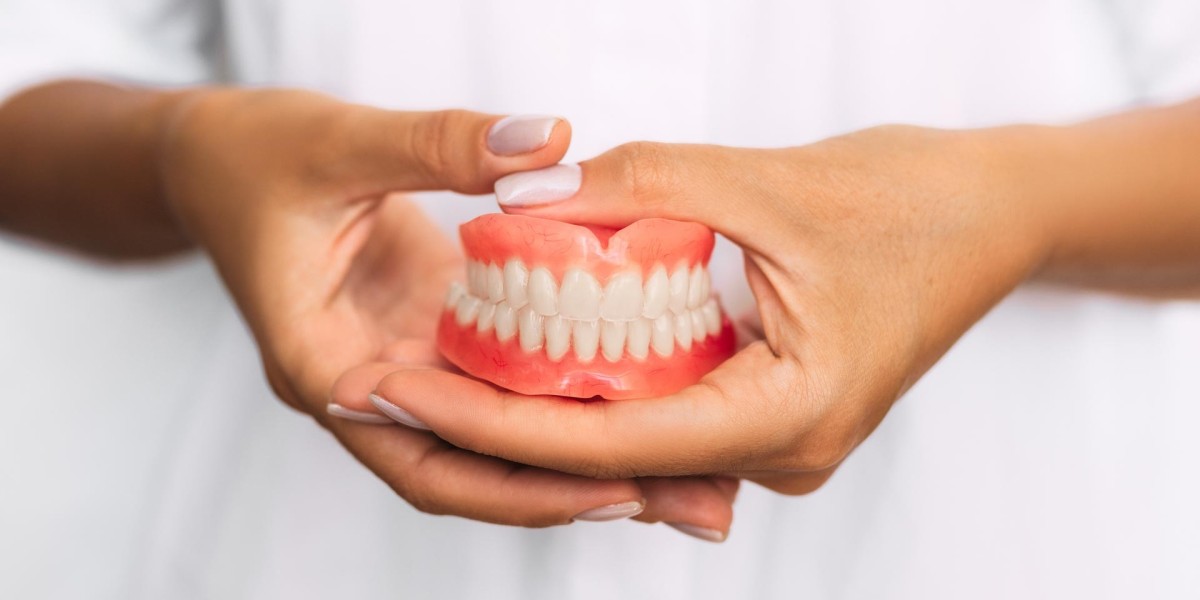Dental prostheses play a vital role in restorative dentistry, offering solutions to individuals with missing or damaged teeth.
These artificial replacements not only improve the aesthetics of a smile but also restore oral functionality, allowing individuals to eat, speak, and maintain a proper bite alignment.
This article explores the various types of dental prostheses, shedding light on how each option caters to different dental needs and preferences.
1. Complete Dentures
Complete dentures are a full set of artificial teeth used when all natural teeth are missing in either the upper or lower jaw, or both.
They consist of a gum-colored acrylic base that rests on the gums, and artificial teeth made of porcelain or resin.
The two primary types of complete dentures are conventional and immediate dentures:
Conventional Dentures: These are made after the teeth have been removed and the gum tissues have healed, which may take several months. Once the gums have fully healed, the dentist creates a custom set of dentures tailored to fit comfortably in the patient’s mouth.
Immediate Dentures: These are created in advance and can be placed immediately after tooth removal. Although convenient, they may require adjustments as the gums heal and change shape.
Complete dentures are removable, requiring regular cleaning and care.
They provide a natural-looking smile and help support the facial muscles, preventing the sunken appearance that can occur with tooth loss.
2. Partial Dentures
Partial dentures are designed for individuals who still have some of their natural teeth remaining.
These prostheses consist of a metal or acrylic framework that supports one or more artificial teeth.
The framework typically includes clasps that grip the remaining teeth to hold the prosthesis securely in place.
Partial dentures fill the gaps caused by missing teeth, preventing the remaining natural teeth from shifting and maintaining the overall structure of the jaw.
One significant advantage of partial dentures is that they are removable, making them easy to clean.
They are also less invasive compared to other dental prosthetic options, such as implants or bridges. Patients can retain some of their natural teeth while enhancing their smile with artificial replacements.
3. Dental Implants
Dental implants are a popular and long-lasting solution for replacing missing teeth.
An implant consists of a titanium post that is surgically placed into the jawbone, acting as an artificial tooth root.
Once the implant has fused with the bone (a process known as osseointegration), a crown, bridge, or denture can be attached to the post.
Implants provide several key benefits:
Stability: Since the implant is anchored in the jawbone, it offers superior stability compared to removable prosthetics.
Longevity: With proper care, dental implants can last for decades, making them a more permanent solution than dentures.
Natural Look and Feel: Implants mimic the appearance and function of natural teeth, allowing patients to eat and speak confidently.
While dental implants require a surgical procedure and a healing period, they are often considered the gold standard in tooth replacement due to their durability and ability to preserve bone structure.
4. Fixed Bridges
A fixed bridge is a non-removable prosthesis used to replace one or more missing teeth.
The bridge consists of artificial teeth (pontics) held in place by dental crowns attached to the adjacent natural teeth, known as abutments.
The abutments act as anchors for the bridge, ensuring a secure fit.
Fixed bridges restore the appearance and function of missing teeth while preventing the remaining teeth from drifting out of position.
One downside is that the adjacent healthy teeth must be filed down to accommodate the crowns, which can weaken them over time.
However, for those who prefer a non-removable option but are not candidates for implants, fixed bridges are a reliable solution.
5. Overdentures
Overdentures are removable prostheses that fit over natural teeth or dental implants.
In cases where patients still have a few healthy teeth remaining, an overdenture can be designed to sit over these teeth, providing additional support and stability.
Alternatively, implants can be used to anchor the overdenture more securely.
Overdentures offer greater retention than traditional complete dentures and can improve chewing efficiency and speech clarity.
They also help preserve the remaining natural teeth or implants, preventing bone loss and maintaining the overall structure of the jaw.
6. Immediate Load Dental Implants
Immediate load dental implants, also known as "same-day implants," allow a prosthesis (usually a crown or bridge) to be attached to the implant immediately after surgery.
This approach eliminates the waiting period required for traditional implants, providing patients with a faster solution to restore their smile.
Immediate load implants are ideal for patients with sufficient bone density and good oral health, as these factors are crucial for ensuring the implant's stability.
While the immediate results are appealing, not all patients are candidates for this procedure, and it requires careful evaluation by a dental professional.
Conclusion
Dental prostheses offer a range of solutions for individuals with missing or damaged teeth, each designed to cater to different needs, preferences, and oral health conditions.
From removable dentures to permanent implants, the right dental prosthesis can significantly improve both the functionality and appearance of your smile.
Consulting with a dentist is essential to determine which type of prosthesis is most suitable for your specific situation, ensuring a comfortable fit and long-term satisfaction.








